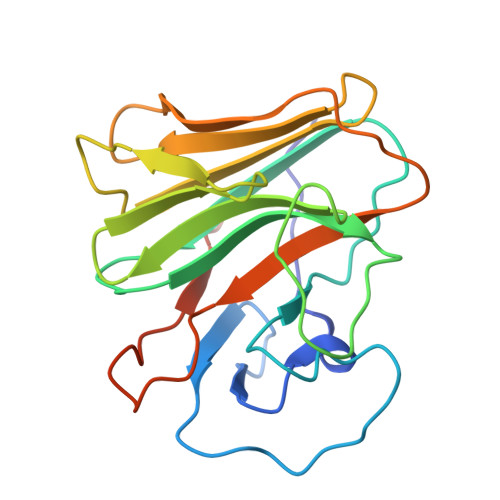Selective degradation of multimeric proteins by TRIM21-based molecular glue and PROTAC degraders.
Lu, P., Cheng, Y., Xue, L., Ren, X., Xu, X., Chen, C., Cao, L., Li, J., Wu, Q., Sun, S., Hou, J., Jia, W., Wang, W., Ma, Y., Jiang, Z., Li, C., Qi, X., Huang, N., Han, T.(2024) Cell 187: 7126-7142.e20
- PubMed: 39488207
- DOI: https://doi.org/10.1016/j.cell.2024.10.015
- Primary Citation of Related Structures:
8Y58, 8Y59, 8Y5B - PubMed Abstract:
Targeted protein degradation (TPD) utilizes molecular glues or proteolysis-targeting chimeras (PROTACs) to eliminate disease-causing proteins by promoting their interaction with E3 ubiquitin ligases. Current TPD approaches are limited by reliance on a small number of constitutively active E3 ubiquitin ligases. Here, we report that (S)-ACE-OH, a metabolite of the antipsychotic drug acepromazine, acts as a molecular glue to induce an interaction between the E3 ubiquitin ligase TRIM21 and the nucleoporin NUP98, leading to the degradation of nuclear pore proteins and disruption of nucleocytoplasmic trafficking. Functionalization of acepromazine into PROTACs enabled selective degradation of multimeric proteins, such as those within biomolecular condensates, while sparing monomeric proteins. This selectivity is consistent with the requirement of substrate-induced clustering for TRIM21 activation. As aberrant protein assemblies cause diseases such as autoimmunity, neurodegeneration, and cancer, our findings highlight the potential of TRIM21-based multimer-selective degraders as a strategy to tackle the direct causes of these diseases.
- Tsinghua Institute of Multidisciplinary Biomedical Research, Tsinghua University, Beijing 102206, China; National Institute of Biological Sciences, Beijing 102206, China.
Organizational Affiliation:

















